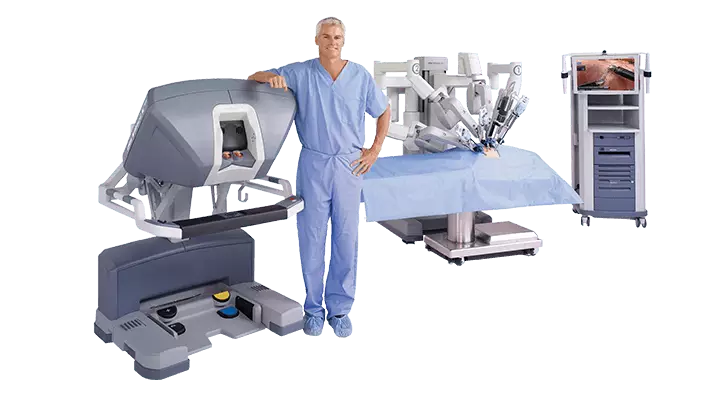Acıbadem Healthcare Group offers diagnosis and treatment services for obesity at Fulya, Maslak, Kadıköy, Bakırköy, Atakent, Taksim and Altunizade Hospitals in Istanbul along with Adana, Eskişehir and Kayseri Hospitals.
Obesity is caused by various factors and affects numerous organs in human body. Therefore, the treatment should be planned through a multidisciplinary approach, in which more than one medical department work in harmony.
Patients who present for obesity treatment are primarily assessed by endocrinologist, dietician, psychiatrist, physiatrist and exercise consultant. The patient is also assessed by cardiologists and pulmonologists, if deemed necessary. Moreover, selected patients are also referred to our General Surgeons who are experienced in obesity surgery.
All patients are assessed in detail for underlying factors of obesity, eating habits, psychological problems and health status. An appropriate treatment program is planned for the patient in light of these assessments. This treatment program may include medical and surgical treatment options as well as medical nutrition and exercise, depending on the patient’s needs.
Appropriate Infrastructure
Patients are served using the infrastructure of Acıbadem that is designed for patients who fight obesity. All details, ranging from operating theater equipment and intensive care units to rooms and beds, are designed with due considerations of patients’ needs.
MRI can be scanned for patients with different heights and weights. Moreover, full body tomography can be scanned with FLAST CT scanner.
Diagnosis and treatment services are rendered for patients through a multidisciplinary approach that combines numerous medical departments under one roof at hospitals of Acıbadem Healthcare Group.
Diagnosis and Treatment Services for Obesity
A multidisciplinary approach is adopted in diagnosis and treatment of obesity; our principal aim to make patients lose weight smoothly without facing a problem and most importantly, maintain optimal body weight over years.
Diet Therapy
We aim to make patients who present for treatment of obesity lose weight under supervision of nutrition and diet experts. Here, a calorie-specific diet is planned for each patient according to eating pattern and health status. Patients are followed up by nutrition experts throughout the program.
Exercise Therapy
Patients who are obesity treatment generally face health problems while exercising due to overweight; for example, problems in knee joint due to excessive loads. These problems cause the patient abandon exercising and result in further weight gain.
Physicians and physiotherapists of Acıbadem plan a program that covers exercises, which fit health status of the person, such as swimming and water gymnastics, to have these patients start exercising again. Doing exercise for 45 minutes a day for three days of week can even be effective in weight loss.
Behavioral Change Therapy
Diets and exercise programs are effective methods to have patients lose weight. However, patients may regain the lost weight, since these programs are deemed a cure of certain period of time and patients return to their former sedentary life at the end of this period. Patients are recommended to make changes in their life styles such as using public transportation instead of driving all the time and to make plans that focus on sports activities, such as nature hikes on weekends instead of dining out.
Medication Treatment
Doctors may prescribe medication treatment to eliminate metabolic problems (reactive hypoglycemia, insulin resistance etc.), if any, that may lead to weight gain in patients. However, medical treatment does not directly mean treatment of obesity with medications. There is no FDA-approved safe and effective drug that can be prescribed for treatment of obesity.
Obesity Surgery
Obesity surgery is based on two basic principles; reduction of stomach volume and/or “malabsorption” which means hindering absorption of nutrients at certain phases of digestion.
Who are good candidates for Obesity Surgeries?
Obesity surgery is recommended for patients with BMI value over 35 who cannot lose weight with other methods, such medical diet under supervision of a specialist, exercise and medical treatment. Moreover, it is recommended for patients with body mass index over 30 who have problems which affect quality of life and life expectancy, such as hypertension, diabetes and sleep apnea. The best surgical technique is determined by doctors in the light of various examinations and tests.
Women who are at reproductive age and plan to conceive in short term should discuss this subject with their doctors. Because it is recommended to avoid pregnancy for 24 months after obesity surgery.
Treatment Methods in Obesity Surgery
Sleeve GastrectomySleeve gastrectomy, also called gastric tube surgery, aims to reduce volume of stomach (approximately 60-100 cc) in order to make patients feel full with minimal food intake. A certain part of the stomach is surgically removed and a tube-like stomach is left behind (very similar to banana in size). Moreover, the part of stomach which releases the hunger hormone is also removed. This operation limits only volume of food intake; since nutrients are absorbed in usual way, patients do not need vitamin or mineral supplements.
Gastric BypassIn Gastric Bypass, a large portion of stomach is bypassed and a small volume of stomach (approximately 30 to 50 cc) is prepped and anastomosed to small intestines. As it is also the case with other obesity surgery procedures, this type of surgery aims that some part of nutrients is discharged without being absorbed by decreasing volume of stomach and inactivating a part of small intestines. Hence, patients feel satisfied with less amount of food and a part of digested nutrients is absorbed.
Robotic-assisted System in Obesity Surgeries.If a general surgeon recommends surgery for weight control, this also implies that the person can be a candidate of obesity surgery with da Vinci robotic surgery system. These operations aim to reduce volume of patient’s stomach to ensure feeling of fullness more quickly in order to decrease food intake.
Other Methods
Intragastric BalloonIn this method, an endoscopy is inserted into mouth cavity and advanced to stomach in order to place an empty balloon into lumen of stomach. Next, the balloon is inflated which occupies a part of stomach and leads to feeling of fullness. Intragastric Balloon is defined as a non-invasive method contrary to other three methods. However, it also differs from other methods with failure of permanent solution, as the balloon is removed following a certain period of time (6 months).
Body mass index (BMI), which is calculated by dividing your body weight by the square of your height (kg/m2), is used to determine severity of obesity; the reference ranges set by World Health Organization are taken into consideration. According to results of Body Mass Index; values over 30 imply obesity, while scores above 40 points to morbid obesity and people with BMI above 50 are super obese.
Obesity calculation with detailed body mass index helps you learn whether your body weight, fat ratio and waist circumference are normal or not according to your age and gender. If your body mass index value is in the range of overweight, obese or morbid obese, you can lose weight by following instructions of a specialist.
In simplest terms, obesity is abnormal and excessive accumulation of fat which impairs overall health of the body. Moreover, obesity can be broadly defined as actual body weight that is 30%, in average, above optimal body weight in adult women and 25% above optimal body weight in adult men.
Body Mass Index (BMI) is globally used to determine severity of obesity. Your BMI value is calculated by dividing your body weight (kilogram) by the square of your body height (meter) (kg/m2).
You can learn if your body weight is within normal ranges regarding obesity classification by typing your height and weight to BMI calculator.
Your dietitian or physician will determine the most appropriate treatment method for you by ordering extra examinations and tests, if your values are below or above normal ranges.
How is Body Mass Index (BMI) calculated?
BMI calculations are based on the obesity classification of World Health Organization.
The result of dividing your weight by square of your height (kg/m2) specifies if you are overweight or obese.
- BMI score below 18.5 kg/m2: Underweight
- BMI score between 18.5-24.9 kg/m2: Normal body weight
- BMI score between 25-29.9 kg/m2: Overweight
- BMI score between 30-39.9 kg/m2: Obese
- BMI score above 40 kg/m2 Morbid obese.
Obesity calculation with detailed body mass index helps you learn whether your body weight, fat ratio and waist circumference are normal or not according to your age and gender.
Accumulated fats produce hazardous hormones for the body. Particularly, the fat accumulation around the waist may lead to more health problems. Your waist circumference gives an opinion about severity of your obesity along with your body mass index score.
Ratio of healthy muscle tissue to harmful fat tissue is also important in obesity calculation. Expected body fat ratio is 12-18% in an adult man and 20-28% in women.
Body fat ratio over 25 in men and over 30 in women is linked to obesity. If your body mass index value is in the range of overweight, obese or morbid obese, you can lose weight by following instructions of a specialist.
What is Obesity Surgery?
Obesity surgery, also commonly called gastric reduction surgery, is, briefly, a series of “closed” procedures that are ever increasingly improving. Not the same procedure is performed for all patients in obesity surgery and the principle “it is the only and the best option” is not adopted. However, all obesity surgeries or in other words, bariatric procedures are performed using laparoscopic (closed surgery) techniques.
Gastric reduction surgeries require very small incisions to access the abdominal cavity rather than a large abdominal incision. Patients can be mobilized on the same day, discharged within few days and can start working within a week. Minimal pain is felt, as no incision is made; and better results are created in aesthetic terms.
Which Gastric Reduction Surgery Technique Is Most Commonly Preferred?
Today, “sleeve gastrectomy” is the gastric reduction surgery technique with proven efficiency and low risk rates that is most commonly performed. Sleeve gastrectomy was first developed 15 years ago.
The other type of gastric reduction surgery is “gastric bypass”. However, gastric bypass is preferred only in special circumstances; gastric bypass can be the primary surgical option for patients with Type 2 diabetes mellitus who have been using insulin for a long time or especially for people with very high BMI.
In addition, gastric bypass can be the second surgery option for patients who have gained weight following sleeve gastrectomy.
Who are good candidates for Obesity Surgeries?Obesity surgeries are not performed for cosmetic indications or in other words, they are not performed to make a person look lean.
You should meet criteria of “morbid obesity” in order to undergo a gastric reduction surgery.
Body Mass Index (BMI) with standards set by World Health Organization is calculated by dividing your body weight by the square of your height (kg/m2) to determine severity of obesity.
For gastric reduction surgeries, your BMI that is calculated using your height and weight is taken into consideration rather your body weight alone.
Individuals Eligible For Obesity Surgery According to BMI Score Are Listed Below:- People with body mass index over 40 kg/m2 (morbid obese)
- Individuals with BMI between 35-40 who have diseases secondary to overweight, such as type 2 diabetes, hypertension and sleep apnea are also deemed morbid obese and they may require gastric reduction surgery.
- Moreover, a surgery may be considered by obesity doctor for patients with BMI score between 30 and 35 who has “recently diagnosed” type 2 diabetes mellitus and metabolic disorder.
Patients should have history of failure to lose weight despite at least two attempts to lose weight with diet treatment at least for 6 months in order to be eligible for obesity surgery. Because morbidly obese patients have a chance to lose weight with diet and exercise, although it is very low (2 percent). Obesity surgery is deemed the most effective treatment option for morbidly obese patients who have failed in diets as described above.
However, diet option fails in 98% of the patients with morbid obesity in the long term, as morbid obesity cannot be easily managed with diet, exercise and psychological support.
Is There An Age Limit For Obesity Surgeries?
Patients should be adolescent or older in order to undergo a gastric reduction surgery. Obesity surgeries can be performed after 14 to 15 years of age. Today, upper limit of age is also increased; the procedure can be performed even at 70 years of age, if there is no contraindication, such as heart or lung disease.
How Is Surgical Technique Decided?
The best gastric reduction surgery technique is solely decided by the surgical team depending on a series of patient factors.
Sleeve gastrectomy is primarily preferred in a large part of patients, but gastric bypass can rarely be the first surgery option.
Intragastric balloon or special diets may help reasonable weight loss before the surgery in some overweight patients.
In the first encounter and examination of patients presenting to Obesity Unit of Acıbadem Hospitals, certain factors are taken into consideration: “Is patient diabetic and if yes, is it at advanced stage?”, “How long has the patient been using insulin and what is the dose?”, “Is there a psychological eating disorder and if yes, how about its severity?” Therefore, a psychologist and a dietitian are members of the obesity surgery team.
Gastric reduction surgery is decided, after the patient is assessed by physicians of all relevant departments at the decision phase.
What Are Risks Of Gastric Surgery?
Patients with morbid obesity are at far higher risks due to the obesity than the risk posed by gastric surgery. They may die 10 to 15 years earlier than peers, if the condition is left untreated. Because morbid obesity is a fatal disease on its own.
Risk of mortality is around one in a thousand in obesity surgeries. Considering the health risks that patients with morbid obesity face due to the obesity, the risk posed by gastric reduction surgery appears medically acceptable.
Robot-assisted Surgery
If a general surgeon recommends surgery for weight control, this may also imply that the person can be a candidate of obesity surgery with robotic surgery system.
The procedure carried out by “da Vinci Robotic Surgery System” is called “robotic-assisted laparoscopic surgery”. da Vinci robot allows a surgeon to perform the intended procedures through small incisions.
Being used in many fields of medicine, ranging from urology and cardiovascular surgery to gynecology and general surgery, robotic-assisted surgery is also used to perform many surgeries for patients with morbid obesity
Weight Loss Following Gastric Surgery
Undergoing gastric reduction surgery with sleeve gastrectomy or gastric bypass technique, patients are recommended to follow a regular diet and exercise program after the surgery. It is deemed that there is correlation between compliance of the patient to this program and success of surgery.
Obesity surgery patients may lose weight, if they comply with postoperative regular diet and exercise program. This program is supervised by specialists and it is aimed to restore healthy body weight in approximately 1 to 1.5 years.
Weight loss leads to following improvement in health status of patients::
- Hypertension can be regulated. Seventy percent of patients can completely stop antihypertensive agents.
- Blood cholesterol improves. It is reported that blood cholesterol reduces in eight percent of patients. Values can be normalized 2 to 3 months after surgery.
- Risk of heart disease reduces.
- Only a very small part of patients with type II diabetes mellitus may require medications.
- Full recovery is generally achieved for patients with pre-diabetes.
- Asthma episodes largely decrease, but complete recovery is achieved in some patients.
- Respiratory problems regress within few months after surgery. Many patients can resume activities that they had to abandon due to respiratory problems.
- Obesity-related sleep problems, such as sleep apnea, disappear.
- Acid reflux is eliminated.
The weight loss achieved with these methods is permanent, if patients comply with above mentioned rules.
Nutrition Following Gastric SurgeryAdoption of the new lifestyle by the patient, compliance with the diet program planned in cooperation with metabolism and endocrinology doctors and regular use of nutrient, vitamin and mineral supplements, if required, are very crucial for the success of obesity surgery.
Although a personalized program is planned for each patient, following principles are basically important for nutrition after sleeve gastrectomy:
Protein will be most important nutrient in your diet beyond this point of life. You need to consume approximately 60 g protein a day (one serving of chicken, turkey, fish or one serving of low-fat cheese).
Make your best in order not to skip any meals. Eat at least 3 main courses of meal a day. In addition, it is rational to eat two snacks. Thus, your stomach will not be filled too much and it will help speed your metabolism.
Always eat your meals at a set dining table after sleeve gastrectomy. Spare at least half an hour for main courses. Do not eat on kitchen counters or before TV or computer.
Prepare your meals in small portions which are sliced to small pieces. Use small plates and utensils to prevent eating more than necessary. Eat your foods slowly and chew them well. Do not keep the service plates or cooking pots on the table and avoid having second serving.
Drink at least 6-8 glasses of caffeine- and calorie- free, unfizzy beverages. Do not drink anything half an hour before meals. This approach may prevent nausea.
Take vitamins and minerals regularly, as recommended by your physician who follows up you after sleeve gastrectomy. Do not use any other medicine or nutrition supplement without consulting to your physician.
Do not confuse obesity surgery with a cure or a diet. These healthy eating habits will be your new life style beyond this period of your life. Ensure your family and friends also adopt this stance.
Exercise Following Gastric SurgeryIt is known that adopting an exercise program under supervision of a specialist plays a role in success of obesity surgery and accelerates convalescence. However, it can be difficult for individuals with no prior habit of exercise to adopt such a program. It may be easier to gain habit of exercising regularly, as the person loses excessive weight and does favorite exercises.
Although a personalized program is planned for each patient, following principles are basically important for exercises after a gastric surgery.
Do not start exercising without approval of your physician. And inform your physician about the exercises you are planning to do.
Start exercising slowly 3 months after the surgery and do not exercise longer or with different moves due to concerns regarding quick weight loss.
Walking is the most optimal exercise for you in the early period. Pay attention to walk for a period and pace recommended by your doctor and exercise consultant.
Avoid abdominal exercises and weight lifting after surgery, until your doctor allows such exercises – the approval will be generally given within 6 weeks.
Prefer your favorite exercises. Try to combine types of exercises which improve your bone and muscle structure and your condition at the same time.
Swimming and fitness are very optimal exercises. Inform your exercise consult, if you have the opportunity, and request a program which covers these exercises.
How It Was Proved That Obesity Surgeries Prolong Life Expectancy?
A Swedish study was conducted on morbid obesity, which was started in 1980s and continued for 20 years. This study that enrolled 1000 patients with morbid obesity who have undergone gastric reduction surgery revealed out that patients who preferred surgery live 13 years longer than those who followed a diet. Therefore, it is acknowledged that sleeve gastrectomy prolongs the life expectancy significantly.
It is proven that gastric reduction surgery reduced deaths secondary to heart attack, stroke and especially breast cancer.
What is Gastric Band?
In this method, an inflatable band is placed to the inlet of stomach with laparoscopic technique. Recently, gastric banding is no more used and other gastric reduction surgeries are performed for people who suffer from obesity.
This method limits the food intake to achieve weight loss. However, it does not suppress your appetite and various problems may be faced in the long-term follow-up. Moreover, scientific studies clarified that gastric bands cause serious complications by up to 40 percent in the long term, even if they are removed.
Obesity is the excessive and abnormal fat accumulation which impairs the health of body.
Body Mass Index (BMI) that is calculated over height and body weight to determine severity of obesity. The body mass index is calculated by dividing weight (kilogram) by the square of height (meter). The individuals with body mass index over 30 are deemed obese, while a score above 40 points to morbid obesity.
Fat tissue secretes hormones and chemicals which can affect the whole system. Some secretions increase the appetite, elevate the satiety limit and cause progression of obesity.
Excessive weight gain not only limits your movements, but it also leads to serious diseases and threatens your life substantially.
Beden Kitle İndeksi Nedir, Nasıl Hesaplanır?
Acıbadem Fulya Hospital, Beslenme ve Diyet Uzmanı Dyt. Melike Şeyma Deniz, Beden Kitle Endeksi üzerine soruları yanıtlıyor.What Are Causes of Obesity?
An irregular and unbalanced diet, fast-food and an inactive life cause weight gain and accumulation of fat in certain vital organs. Excessive eating after a long period of hunger and too much intake of carbohydrate-based foods and sweet drinks are examples of bad eating patterns that may cause obesity.
If both parents are overweight, the risk of obesity is 80% for children. Hormonal causes of obesity include diabetes mellitus, thyroid gland diseases and adrenal gland diseases.
Healthy eating pattern and active lifestyle should be adopted at childhood to avoid abnormal fat accumulation.
Obesity in the World and Turkey
Obesity is one of the most critical health problems at global scale, particularly in developed countries. According to World Health Organization data, there are 1.9 billion overweight people around the world, including 600 million obese individuals.
A similar fact also applies to TurkeyAccording to Body Mass Index research of Turkish Statistics Institution (TÜİK) in 2015; 20 out of every 100 people (1 out of every 5 individuals) are obese. In Turkey, obesity has increased by 31.1% in comparison to figures reported by a study conducted in 2008. Incidence of obesity is 15.3% in men and 24.5 % in women.
Obesity Is A Treatable Disease
expectancy significantly. However, obesity is a treatable disease.
Treatment of obesity includes exercise combined with diet or surgical techniques. Specialists determine the treatment method that fits patient’s needs best in order to restore and maintain healthy body weight.
You may cope with other diseases, such as hypertension, heart failure, sleep apnea and breast, colon and prostrate cancers and take a step into a healthy life, if you overcome obesity..
How Obesity Tested And Calculation Is Performed?
Obesity calculations are based on obesity classification of World Health Organization and Body Mass Index (BMI) is the calculation method.
How is Body Mass Index (BMI) calculated?BMI= Weight (Kg) / square of body height expressed in meters
Calculation for an individual with body weight = 100 kg and height = 1.80 m is shown below.
1.8 x 1.8 = 3.24
100 / 3.24 = 30.8
BMI = 30.8
According to the reference range of World Health Organization, values between 18.5 and 24.99 point to normal body weight. BMI scores above 25 indicate overweight, while scores above 30 and 40 are deemed obesity and morbid obesity, respectively.
Obesity classification by BMI according to BMI:Value range Result
- Individuals with BMI below 18.5 kg/m2 Underweight
- 18.5-24.9 kg/m2: Normal body weight
- 25-30 kg/m2 Overweight
- 30-35 kg/m2 Type 1 obese
- 35-40 kg/m2 Type 2 obese
- 40 kg / m2 Morbid obese (severe obesity)
Moreover, while values over 40 are identified as morbid obesity, they can also be classified as follows:
- 50 kg/m2: Super obese
- 60 kg/m2: Super super obese
Body mass index does not address certain elements such as fat content, body type and fat and muscle tissue. Therefore, specialists use metabolic rate and detailed body analyses to get more detailed information about the obesity problem along with body mass index and waist circumference that are used to calculate obesity.
It is important for diagnosis and treatment of obesity to identify location of fat tissue accumulation in the body. Type of fat accumulation in body divides into two groups; apple and pear type.
In apple type obesity, fat accumulates around and at level of belly button. Accumulation of fat is observed in hips and upper leg in pear-type obesity. However, it is acknowledged that accumulation of fat around the umbilical zone (belly button) is more hazardous and at higher risk for cardiovascular diseases relative to hips and upper legs.
Waist circumference over 94 cm in men implies increased risk, while 102 cm is regarded as high risk. Considering women, limits of risk and high risk are 80 cm and 88 cm, respectively.
Obesity Calculation with Detailed Body Mass Index
Obesity calculation with detailed body mass index helps you learn whether your body weight, fat ratio and waist circumference are normal or not according to your age and gender.
What Are Other Factors Taken Into Consideration Along With Body Mass Index?
Accumulated fats produce hazardous hormones for the body. Particularly, the fat accumulation around the waist may lead to more health problems. Your waist circumference gives an opinion about severity of your obesity along with your body mass index score.
Ratio of healthy muscle tissue to harmful fat tissue is also important in obesity calculation. Expected body fat ratio is 12-18% in an adult man and 20-28% in women. Body fat ratio over 25 in men and over 30 in women is linked to obesity.
Type your information for obesity calculation and learn if you have a healthy body weight or what can you do.
Coping With Obesity
According to World Health Organization, obesity is among top 10 diseases with highest risk. Today, obesity is the second most common cause of preventable deaths following smoking.
First, it is necessary to modify your eating habits and lifestyle to fight obesity. You need to pay attention to following risk factors, while you are trying to cope with obesity.
Environmental RisksNowadays, physical activities are generally restricted in children who live in large cities. Most of the children only participate in physical activities such as sports in physical education class.
You should encourage and promote your child to do sports more. Use of computer and watching TV are environmental factors that require extra attention. These two factors cause your child store energy throughout the day rather than spending it.
Moreover, watching TV or use of computer allows eating more junk food. Moreover, advertisements promote intake of foods with no nutritional value, resulting in weight gain in your child.
Pay Attention to Eating Pattern!An obese child may not eat more than peers, but spends less energy. Low energy consumption in a child is among the major risk factors that lead to weight gain.
Shorter meal time, eating meal once or twice a day or intake of high-calorie foods, such as carbohydrates and deep fried foods, are important factors regarding weight gain in children.
Are Genetic Factors Effective?If both parents are overweight, the risk of obesity is 80% for the child. The figure may decrease down 40%, if only mother or father is overweight. One should always remember that the major cause of obesity is to spend dietary energy rather than eating too much.
It has been observed that parents of children, who struggle against obesity, also have a life style poor in physical activity..
Effect of HormonesChildren with obesity should necessarily be examined by a doctor who is specialized in hormone diseases. Adrenal gland diseases, thyroid gland diseases and diabetes mellitus may be the underlying cause of obesity in some of children with obesity.
What Is Morbid Obesity or Being Overweight That Requires Surgery For Management?Obesity is the excessive fat accumulation in the body due to calorie intake higher than calories burned. On the other hand, morbid obesity is defined as a diseased form of overweight that shortens life by causing fatal diseases and a BMI score above 40.
Who Are Good Candidates of Obesity Surgery?
Individuals with BMI between 35-40 who have diseases secondary to overweight, such as type 2 diabetes, hypertension and sleep apnea are deemed morbid obese regarding obesity surgery. A surgery may be considered even for patients with BMI score between 30 and 35 who has “recently diagnosed” type 2 diabetes mellitus and metabolic disorder.
Why Is Morbid Obesity Dangerous?Obesity is a clear risk factor for atherosclerosis and various cancers, such as colon, breast, kidney, urinary bladder, pancreas and prostate cancers. People with morbid obesity have to cope with dozens of problems such as type 2 diabetes, hypertension, hyperlipidemia, liver failure, sleep apnea, joint problems and polycystic ovary syndrome.
Atherosclerosis starts at early ages and progresses quickly in these individuals and it paves the way for heart attack or stroke. Unfortunately, morbidly obese individuals die significantly earlier than peers due to these conditions.
Moreover, severe overweight leads to severe loss of self-confidence and social problems in children and adolescents. Morbid obesity can also be an important reason for female fertility.
How Should Morbid Obesity Be Treated?Diet is the first treatment option for patients with morbid obesity. However, diet therapy should be stopped, if a diet that lasts longer than 6 months and is tried at least twice yields no positive outcome. At this point, the most effective treatment option is surgery which should be performed without unnecessary delay.
Obesity in Children
If your child is overweight even in young age and you find your child in front of the fridge any time you look, it is the right time to say stop. If you think your child is overweight in comparison to peers, you can calculate your child's body mass index.
You can learn if your child is obese according to the result of body mass index. If you think your child has a weight issue, it is necessary to visit a specialist as soon as possible. Thus, your child can be started on treatment of obesity early.
There are two important key points of obesity. First one is to start treatment early, while the other is intake of calorie lower than calories burned.
Obesity is one of the most common health problems around the world. It is prevalent not only in adults, but also in children. Overweight children are at higher risk of obesity and morbid obesity relative to children with normal body weight. Therefore, it will be easier to cope with obesity, if treatment is started early.
What Are Diseases That Obese Children Are More Vulnerable?There are 155 million overweight and 45 million obese children in the age range of 5 years to 17 years all around the world. While metabolic syndromes are not observed in children with normal body weight, type 2 diabetes, hypertension, respiratory failure and cardiovascular diseases are likely in overweight and obese children.
Encourage them to exercise!Children younger than 6 spend 2 to 5 hours in front of a television, computer or tablet, but spending more than 4 hours in front of either may lead to obesity in the future.
The risk of obesity is very high for all children who spend more than 4 hours in front of TV. Television or computer in the room your children sleep or bedroom may prolong this period of time.
American Academy of Pediatrics states that children younger than 2 should not be allowed to watch TV. If your child is older than 2, it is recommended to limit the time spent in front of TV to 1 or 2 hours a day.
Moderate exercising for 60 minutes a day is advised for children over 2 years of age. Most children do not perform adequate physical activity every day. In schools, physical education classes help only 25- to 30-minute physical activity per week. Therefore, ensure that your child perform physical activities adequately every day.
Activity is a must for children to burn calories – an issue that is also very effective in treatment of obesity. The eating pattern prescribed for children should necessarily be combined with regular exercise in the day time. Height and weight of the child should be taken into considered when an exercise program is planned for your child.
Frequency and intensity of exercise can be increased depending on development and health status of your child. Non-strenuous exercises can be instructed at the beginning, while intensity can be gradually increased in the course of program. Daily physical activity of the children should last at least 30 minutes. This includes running, cycling, dancing, jogging or other sports branches.
Physical activities performed by your child every day not only increase consumption of energy, but they also boost the resistance against insulin. This will help preventing onset and progression of hypercholesterolemia, cardiovascular diseases and diabetes mellitus.
Is Obesity a Genetic Disease?
Overweight parents are among factors that increase future risk of obesity in children. While genetic inheritance is linked to body weight, it cannot be hold responsible alone. Eating habits and physical activities of families also correlate with overweight.
Which Diet Programs Are Appropriate For Children?There are various diet options for treatment of obesity in children. It is absolutely incorrect to start your children on diet programs promoted in magazines or newspapers. Diet program of the child should comply with eating habits of the child and the family.
Child’s age, height, weight, time spent for physical activity every day and social circle should be taken into consideration especially when a diet program is planned. All diets generally include main courses and snacks. No meal should be skipped to gain all healthy benefits of a diet.
Eating small servings at shorter intervals should be preferred over large meals. Given the developmental needs of the child, diet should be rich in calcium, zinc, iron and vitamins. Therefore, you should bring your child to an experienced dietitian and act in strict compliance with the recommended list..
Do not be impatientTreatment of obesity in children is a process which requires patience and support of the family throughout the treatment period is very important. Family should patiently guide the child in the diet period in order not to cause disappointment. A child who is maintained on diet therapy may not be able to lose weight every week. Failure to lose weight does not mean that your child is not complying with the diet. Therefore, you should be gentle and patient for your child in the therapy period.
Is Obesity Surgery Performed in Children?Medication treatment or obesity surgery is not considered for children who have obesity. Generally, children are given high-calorie foods that occupy a large volume in stomach in order to suppress appetite. Slow and healthy weight loss is the optimal approach in treatment of obesity. Therefore, it is necessary to supervise the therapy patiently. Particularly, pre-adolescents lose weight slowly, as they are growing and developing. Height and weight are normalized, when height increases.
How Can Weight Gain Be Prevented?
If you think your child has obesity problem or want to avoid obesity, following advices may help you.
- Encourage your child do sports activities in his/her spare time.
- Physical activities in school can be increased.
- Eating pattern of the family can be modified according to needs of the child.
- Foods which are sweet and have high nutritional value can be preferred.
- Consumption of fizzy and sweet drinks can be decreased.
- Short-distance walking or cycling can be useful.
- You can create opportunities for your child to do sports.
- Excessive gum chewing and using food as a reward should be avoided.
- Intake of sweeteners or diet products should be limited.
- You can prepare a lunch pack to have your child eat healthy foods at school.
- Packed foods such as fast-food should be avoided.
- Consumption of vegetables and fruits should be encouraged.
- Eating fast is among most effective underlying causes of obesity. Eating fast does not induce feeling of fullness. Therefore, it is necessary to chew well and eat slowly.
Hospitals
-
 Adana Hospital
Adana Hospital -
 Altunizade Hospital
Altunizade Hospital -
 Bakırköy Hospital
Bakırköy Hospital -
 Bursa Hospital
Bursa Hospital -
 Dr. Şinasi Can (Kadıköy) Hospital
Dr. Şinasi Can (Kadıköy) Hospital -
 Eskişehir Hospital
Eskişehir Hospital -
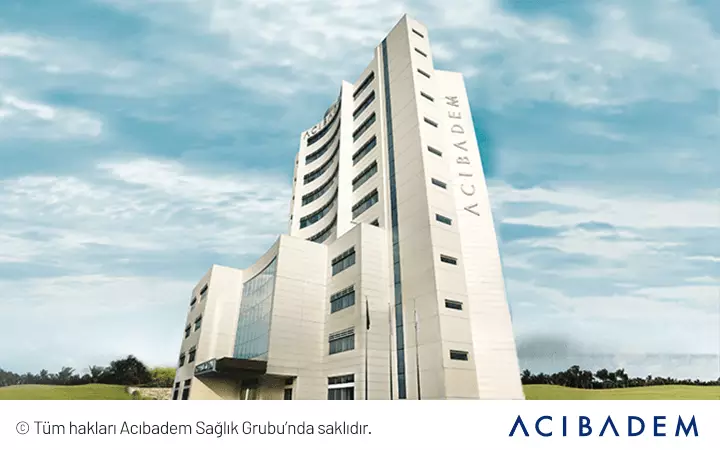 Fulya Hospital
Fulya Hospital -
 Kayseri Hospital
Kayseri Hospital -
 Maslak Hospital
Maslak Hospital -
 Taksim Hospital
Taksim Hospital
Doctors
-
 Prof. ABDULLAH ZORLUOĞLU, M.D.
Prof. ABDULLAH ZORLUOĞLU, M.D.
-
 Prof. BİLGİ BACA, M.D.
Prof. BİLGİ BACA, M.D.
-
 Prof. CAN KÜÇÜK, M.D.
Prof. CAN KÜÇÜK, M.D.
-
 Prof. CİHAN URAS, M.D.
Prof. CİHAN URAS, M.D.
-
 Prof. DENİZ GÖKALP, M.D.
Prof. DENİZ GÖKALP, M.D.
-
 Prof. ENDER ARIKAN, M.D.
Prof. ENDER ARIKAN, M.D.
-
 Prof. HANİFE ALTUNKAYA, M.D.
Prof. HANİFE ALTUNKAYA, M.D.
-
 Prof. İSMAİL HAMZAOĞLU, M.D.
Prof. İSMAİL HAMZAOĞLU, M.D.
-
 Prof. MURAT SARUÇ, M.D.
Prof. MURAT SARUÇ, M.D.
-
 Prof. NESLİAR ESER KUTSAL, M.D.
Prof. NESLİAR ESER KUTSAL, M.D.
-
 Prof. ORHAN DEMİRCAN, M.D.
Prof. ORHAN DEMİRCAN, M.D.
-
 Prof. TAMER KARŞIDAĞ, M.D.
Prof. TAMER KARŞIDAĞ, M.D.
-
 Prof. TAYFUN KARAHASANOĞLU, M.D.
Prof. TAYFUN KARAHASANOĞLU, M.D.
-
 Assoc. Prof. AYŞENUR ÖZDERYA, M.D.
Assoc. Prof. AYŞENUR ÖZDERYA, M.D.
-
 Assoc. Prof. DENİZ ATASOY, M.D.
Assoc. Prof. DENİZ ATASOY, M.D.
-
 Assoc. Prof. EYÜP GEMİCİ, M.D.
Assoc. Prof. EYÜP GEMİCİ, M.D.
-
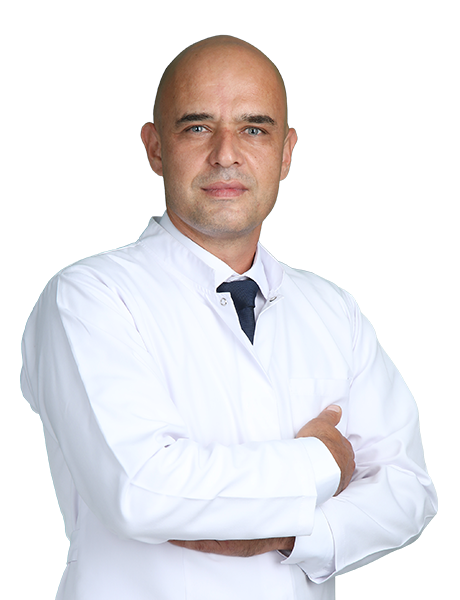 Assoc. Prof. HAYRETTİN DİZEN, M.D.
Assoc. Prof. HAYRETTİN DİZEN, M.D.
-
 Assoc. Prof. İSMAİL AHMET BİLGİN, M.D.
Assoc. Prof. İSMAİL AHMET BİLGİN, M.D.
-
 Assoc. Prof. MÜJDAT KARA, M.D.
Assoc. Prof. MÜJDAT KARA, M.D.
-
 Assoc. Prof. SAVAŞ KARATAŞ, M.D.
Assoc. Prof. SAVAŞ KARATAŞ, M.D.
-
 AKIN DEMİR, M.D.
AKIN DEMİR, M.D.
-
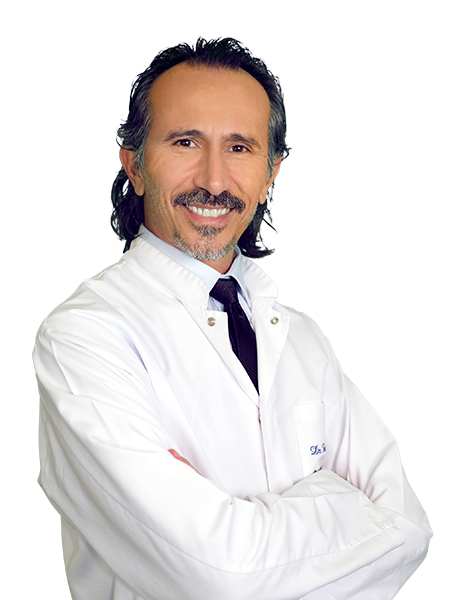 FATİH KAYA, M.D.
FATİH KAYA, M.D.
-
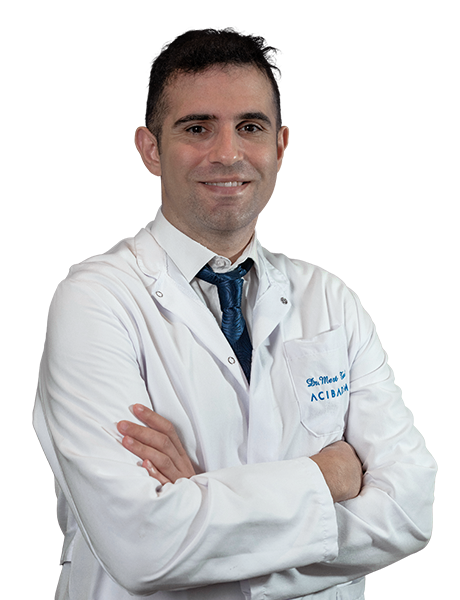 MERT TANAL, M.D.
MERT TANAL, M.D.
-
 NALAN KARADAĞ, M.D.
NALAN KARADAĞ, M.D.
-
 OKAY MEHMET ERGENOĞLU, M.D.
OKAY MEHMET ERGENOĞLU, M.D.
-
 RAİF ORHAN, M.D.
RAİF ORHAN, M.D.
-
 SÜHA ALZAFER, M.D.
SÜHA ALZAFER, M.D.
-
 TOLGA HÜNER, M.D.
TOLGA HÜNER, M.D.
-
 Clinical Psychologist İREM SÜRMEZ, MSc
Clinical Psychologist İREM SÜRMEZ, MSc
-
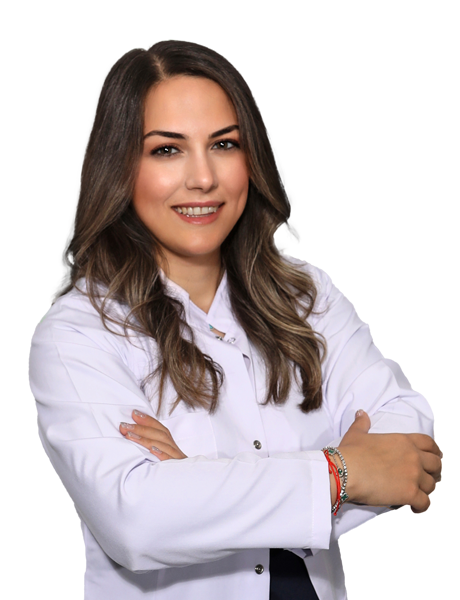 Dietician ÇİSEM GÜNDÜZ, MSc
Dietician ÇİSEM GÜNDÜZ, MSc
-
 Dietician FATMA TURANLI, MSc
Dietician FATMA TURANLI, MSc
-
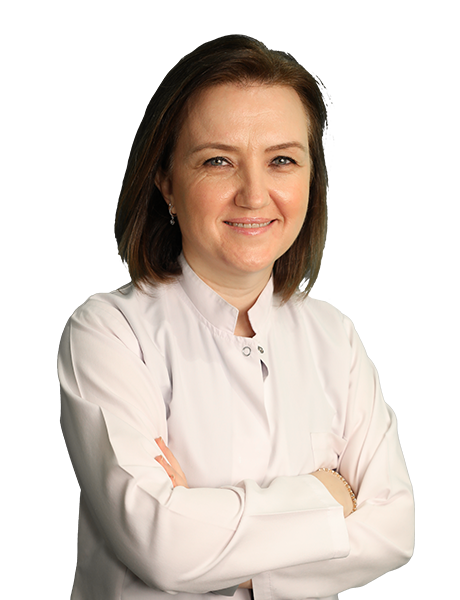 Dietician İPEK ERTAN, MSc
Dietician İPEK ERTAN, MSc
-
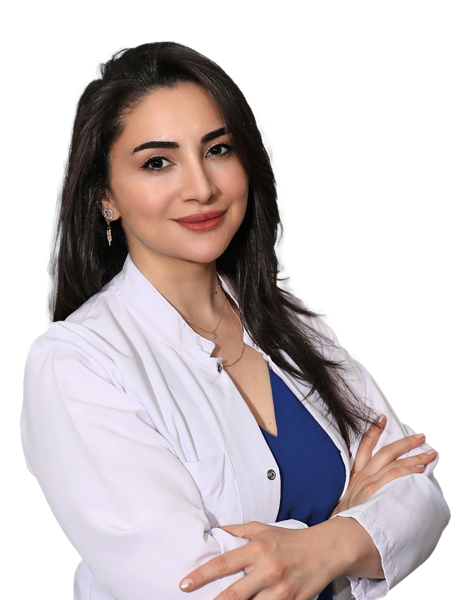 Dietician PAKİZE GİZEM AKGÜL, MSc
Dietician PAKİZE GİZEM AKGÜL, MSc
-
 Dietician ŞENGÜL SANGU TALAK, MSc
Dietician ŞENGÜL SANGU TALAK, MSc
-
 Dietician ŞEYDA SILA BİLGİLİ TOKGÖZ, MSc
Dietician ŞEYDA SILA BİLGİLİ TOKGÖZ, MSc
-
 Dietician AYŞEGÜL AKKAYA ERDEN
Dietician AYŞEGÜL AKKAYA ERDEN















